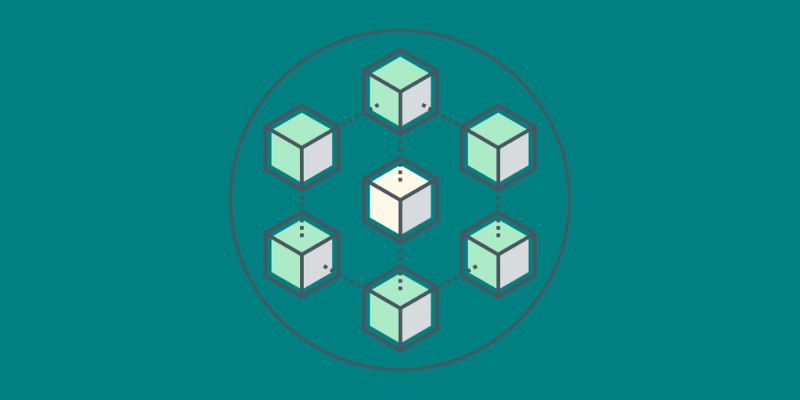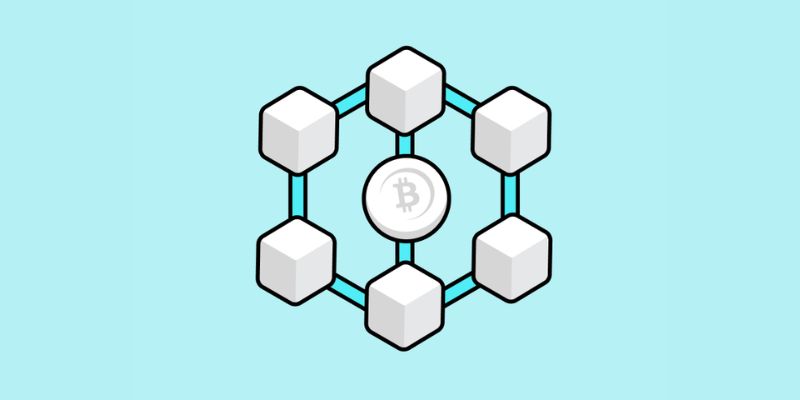Ever felt lost in the buzz of blockchain talk? Let’s decode it together. Think beyond just digital cash; blockchain basics cover much more ground. It’s the tech behind the secure and open world of crypto transactions. This is your map to understanding the cornerstones that keep this system robust and the cryptography securing it. Like a digital Fort Knox, blockchain’s not just for finance wizards—everyone should get it, and I’m here to make sure of that. Ready to peel back the layers of the blockchain onion? Let’s dive into the architecture that’s changing how we think about security and trust online.
Understanding the Cornerstones of Blockchain Technology
The Fundamentals of Blockchain Explained
Blockchain is like a digital ledger book. It records all trades of digital money, like Bitcoin. Each trade is a “block”. These blocks link together in a “chain”. Every block shows trade details. They include the sender, the receiver, and the amount. This chain grows with every new trade.
It’s a big deal because it’s open and secure. Everyone can see it, but no one can change past trades. This makes things very safe and trustworthy. Trades here are not like normal bank trades. Here, they are public and clear to all.
Deciphering Distributed Ledger Basics
A “distributed ledger” is a shared ledger. It’s like a record book spread across many computers. Each computer has a copy of the book. This system is powerful for some reasons. First, with many copies, the record can’t be lost. Second, it’s hard to cheat. To make false trades, you’d have to hack many computers at once.
The ledger is the core of blockchain. Each part of the record is checked by a process called “consensus mechanisms”. These make sure all copies agree. It’s like having many people check an answer. When they all say it’s right, we trust it more.
Blockchain makes sure everything is correct through special math called “cryptography”. It locks each block, so the details don’t change. People who help with this process are called “miners”. Miners use computers to solve tough puzzles. When they solve one, they add a block to the chain. This adds security.
There are different types of blockchains. In “public” ones, anyone can join and see the trades. In “private” ones, only some people can join. Permissioned blockchains control who can trade and who can’t.
We also have “smart contracts”. They are sets of rules on a blockchain. The rules run themselves. If the conditions are right, the trade happens automatically. This saves time and reduces mistakes.
Blockchain is changing how we do things. It helps with more than money. It’s also used for tracking things. An example is making sure food is safe from farm to table.
In summary, blockchain is like a puzzle. It builds trust by being open and very, very good at checking itself. It’s a way to agree on trades without meeting face-to-face. With blockchain, the internet is not just for sharing info. It’s also for sure and fair trades.
Delving into Cryptography and Security in Blockchain
Cryptography’s Role in Ensuring Blockchain Security
Cryptography keeps blockchain safe. It’s like a lock and key for data. Without it, anyone could change the data, and no one could trust it. Imagine writing a secret code no one else can read. That’s what cryptography does. It scrambles data so only certain people can understand it.
In blockchains, cryptography does a few cool things. First, it makes sure you’re you. This is called authentication. Second, it keeps your info secret. This is encryption. Think of it like sending a letter in a locked box. The person who has the key can open it.
We also have something called digital signatures. They are like signing your name, but way safer. They prove that a message or transaction comes from you and no one else. This is key in blockchain and cryptocurrency. It’s how everyone knows who owns what without showing personal info.
Cryptography is all about trust in the digital world. It makes blockchain a strong tool for security.
How Hash Functions Cement Blockchain Integrity
Hash functions are like fingerprinting data. They turn a big bunch of information into a short string of letters and numbers. This short string is called a hash. Each data has a unique hash, and if the data changes, the hash changes. It’s like a seal that says “this data hasn’t been messed with.”
In the blockchain, every block of data has its own hash. Blocks also have the hash of the block before them. This chains the blocks together. That’s how we get the term “blockchain.” If someone tries to change a block, the hash changes. This breaks the chain. All the people in the network can see this and stop it. That’s how hashes help in keeping blockchains fair and unchanged.
This system works because it’s tough to figure out what data made a hash. It’s almost impossible to reverse-engineer. This keeps the data fixed and safe. We call this property ‘hash function immutability.’
Blockchain uses hash functions every step of the way. When you make a transaction, when it’s added to a block, and when people check the block. It’s key for the trust in the system.
In short, blockchain is like a secure diary everyone can read but no one can erase or change. Cryptography is the lock and hash functions are the seals on the diary pages. They work together to make a system we can all trust. This is why we’re seeing more use of blockchain in many areas, like supply chain management.
Through this, I hope you’ve found a clearer picture of the role cryptography and hash functions play in blockchain. They’re the heroes keeping our digital worlds safe and sound!
The Mechanics Behind Blockchain Operation
The Intricacies of Smart Contracts
Let’s dive into smart contracts. Think of them as promises written in code. These promises live on the blockchain. They automatically carry out what they’re set to do. For example, if I agree to pay you once you deliver goods, a smart contract can do that for us, without needing a middleman.
Smart contracts work because they’re programmed to act when certain things happen. If the item shows up, the payment goes through. All this is recorded on the blockchain. This means you can trust the process, as everyone can see what the smart contract does.
Smart contracts help with lots of stuff. They can keep track of property ownership, manage supply chains, or even help artists sell their work securely. They’re like robot helpers that make sure deals go as planned.
Nodes and Network: The Backbone of Blockchain Systems
Next, let’s talk about nodes and the network. In simple terms, a node is like a small computer that holds a copy of all the blockchain’s data. These nodes are all over the world. They talk to each other to check the data and keep the blockchain running smoothly.
Here’s how blockchain keeps your info safe. Every node has the same list of all transactions. This list is the blockchain. When a new transaction happens, every node checks it. They make sure it’s okay. Then they add it to their list. This means that no single node controls everything. It’s a team effort.
Since there’s no single point of failure, it’s super tough for hackers to mess with a blockchain. Even if they try to change data on one node, the other nodes won’t match up, and the change won’t stick.
Blockchain is like a team sport. Every player (node) follows the rules (consensus mechanisms) to win (validate transactions). Some nodes do extra work. These are called ‘miners’ in systems like Bitcoin. They solve tough puzzles (proof of work) to add new blocks to the chain. Others may use a different system called proof of stake, where they’re chosen to create new blocks based on how much currency they hold and are willing to ‘lock up’ as a form of security.
All these parts fit together to keep the blockchain working well. This teamwork means no one needs to trust just one person or company. Instead, everyone can trust the system as a whole. It’s a clever way to make sure everything’s fair and safe, and it’s why people are so excited about blockchain. It’s not just about money – blockchain can change the way we do all sorts of things, from tracking food to making sure medicines are real.
In the blockchain world, nodes are the unsung heroes that make it all happen. They keep the network honest and working. Think of them as guardians of the blockchain, always making sure everything ticks along as it should. Together, they form the backbone of this amazing technology we call blockchain.
Exploring the Diversity of Blockchain Architecture
Comparing Public and Private Blockchain Models
Think of blockchain as a digital ledger. But not just any old ledger. It’s shared across the world and holds records like a super-strong safe. Imagine you write on a sheet in this ledger. Now, everyone has a copy of that sheet, so no fibbing about what’s written.
Now, public blockchains are like a public park. Anyone can come in, take a stroll, and write on the ledger. Bitcoin and Ethereum are like this. They welcome everyone. They run on many computers and are very safe because changing any data is super hard.
In a private blockchain, it’s like a private party. You need an invite to join. These are great for businesses that want to keep things just among themselves. Only they can peek at the ledger or add to it. They are faster than public ones but not as trusty since fewer people keep them in check.
Permissioned Blockchains: Tailoring Access and Control
So, we have public and private blockchains. But what if you want something in the middle? Say hello to permissioned blockchains. These are sort of like a club. Clubs have rules, right? Same here. Some people can look at the ledger, but only a few can write on it.
Permissioned blockchains set up rules for who can do what. It’s like giving out keys to different doors in a building. They’re neat for groups that trust each other but still want to be choosy about who gets to do certain things. They blend the open vibe of public blockchains with the control of private ones.
Each blockchain kind has its own use. It depends on what you need. Do you want something super open and unbreakable but maybe a bit slow? Public blockchain is your guy. Need it fast and just for your crowd? Go private. Or want a bit of both worlds? Permissioned is your jam.
We’ve come a long way from the first idea of blockchain. Today, from managing who sees what to keeping things secure, blockchain is a shape-shifter, changing to fit just right for all kinds of uses. It’s like a puzzle that we’re still figuring out, and every piece makes things cooler and more useful.
Remember, no matter the type, the magic of blockchain is in sharing data but also in not allowing anyone to mess with past records. Whether it’s public, private, or permissioned, blockchain keeps your stuff safe and sound, just the way you left it. And that’s pretty awesome.
In wrapping up, we’ve walked through the key parts of blockchain technology. We started with the basics, making sense of how blockchains work. We saw the power of shared ledger systems too. Then we moved on to unmatched security thanks to cryptography and hash functions. After that, we explored what makes blockchains tick, like smart contracts and the network of nodes.
Finally, we looked at the different kinds of blockchains out there. Both public and private models have their place, just as permissioned blockchains offer unique control. Each part is crucial in the blockchain puzzle.
Blockchain is more than a tech buzzword. It’s a new way to secure, share and manage data across the globe. It’s changing the game for many sectors. As we adopt this tech more, who knows what innovations will come next? Keep an eye on this space; blockchain is just getting started.
Q&A :
What is blockchain and how does it work?
Blockchain is a distributed ledger technology that allows data to be stored globally on thousands of servers while letting anyone on the network see everyone else’s entries in near real-time. It’s essentially a chain of blocks, where each block contains a collection of transactions. Everyone participating in the network has access to the ledger and its immutable record of transactions. With blockchain, no single party controls the data or the information. When a transaction is recorded, it’s encrypted, and each transaction is linked to the previous one, making it difficult to alter past records.
Why is blockchain considered to be secure?
Blockchain is known for its enhanced security for several reasons. First, each new transaction is encrypted and linked to the previous transaction. Secondly, each block of transactions is added to the ledger after a validation process that includes a consensus among network nodes. This decentralization reduces the risk of tampering. Furthermore, blockchains can use various consensus mechanisms like proof of work or proof of stake to validate new blocks, which is an additional layer of security against fraudulent activities.
What are the main benefits of using blockchain?
The main benefits of blockchain technology are centered around its key characteristics: decentralization, transparency, immutability, and security. These attributes offer several advantages, such as reduced transaction costs by eliminating intermediaries, increased speed and efficiency in transaction processing, enhanced security against fraud and unauthorized activities, and an immutable ledger which helps in the accurate tracking of assets and information throughout their lifecycle.
Can blockchain be used for more than just cryptocurrencies?
Yes, blockchain has a wide range of applications beyond cryptocurrencies. Its secure and transparent nature makes it suitable for many other uses including supply chain management, smart contracts for automated agreements, voting systems, identity verification, and even healthcare for the secure and private management of patient records. The potential uses for blockchain are vast and industries are continually exploring new ways to leverage this technology.
How does blockchain ensure data accuracy and reliability?
Blockchain technology ensures data accuracy and reliability through its network consensus mechanisms where multiple parties validate each transaction. This, coupled with strong cryptographic techniques, makes it nearly impossible to alter data once it’s been recorded onto the blockchain. Each block in the chain contains a unique hash, along with the hash of the preceding block, creating a linked chain that secures the information and maintains the integrity and reliability of the data throughout the blockchain.




RELATED POSTS
Platforms And Protocols For Connecting Different Blockchains: Interoperability Unlocked
Discover the Leading Interoperability Protocols...
What is Optimism? A promising Layer 2 solution for Ethereum
Ethereum is facing scalability challenges,...
Emerging Consensus Mechanisms for Blockchain: The Future of Decentralized Validation
Emerging consensus mechanisms for blockchain....
Blockchain For Securities Trading: Revolutionizing Securities Trading for Investors
Advancing securities trading with #Blockchain...
What is the trading range of Kaspa standard deviation?
Are you interested in Kaspa...
Security of Proof of Stake: Is Your Digital Investment Safe?
Enhance PoS Security! Learn about...
What is a Bullish Run? Exploring Its Impact on Investment Strategies
What is a Bullish Run?...
How to Secure Public Keys: Unbreakable Techniques for Safe Storage
Discover best practices for securing...
How to Avoid Crypto Wallet Scams: Foolproof Strategies for Digital Safety
How to avoid crypto wallet...
Is Blockchain Secure? Unveiling Myths and Truths Behind Digital Fort Knox
Is blockchain secure? Explore cryptographic...
Acki Nacki Airdrop: A detailed guide on how to participate
In the rapidly evolving world...
Blockchain Showdown: Layer 1 vs Layer 2 Unraveled
Enhance transaction throughput with blockchain...
Greg Maxwell: Influence in the Cryptocurrency world
Greg Maxwell is one of...
Define Blockchain Technology – A Beginner’s Introduction
Have you ever wondered what...
The Unique Characteristics of Blockchain Technology – A Guide to Its Power and Potential
The unique characteristics of blockchain...
Blockchain Technology in Healthcare – A Breakthrough Comprehensive Solution
Interested in “Blockchain Technology in...